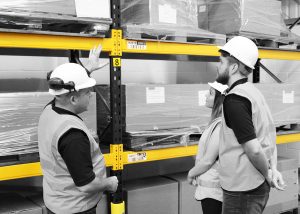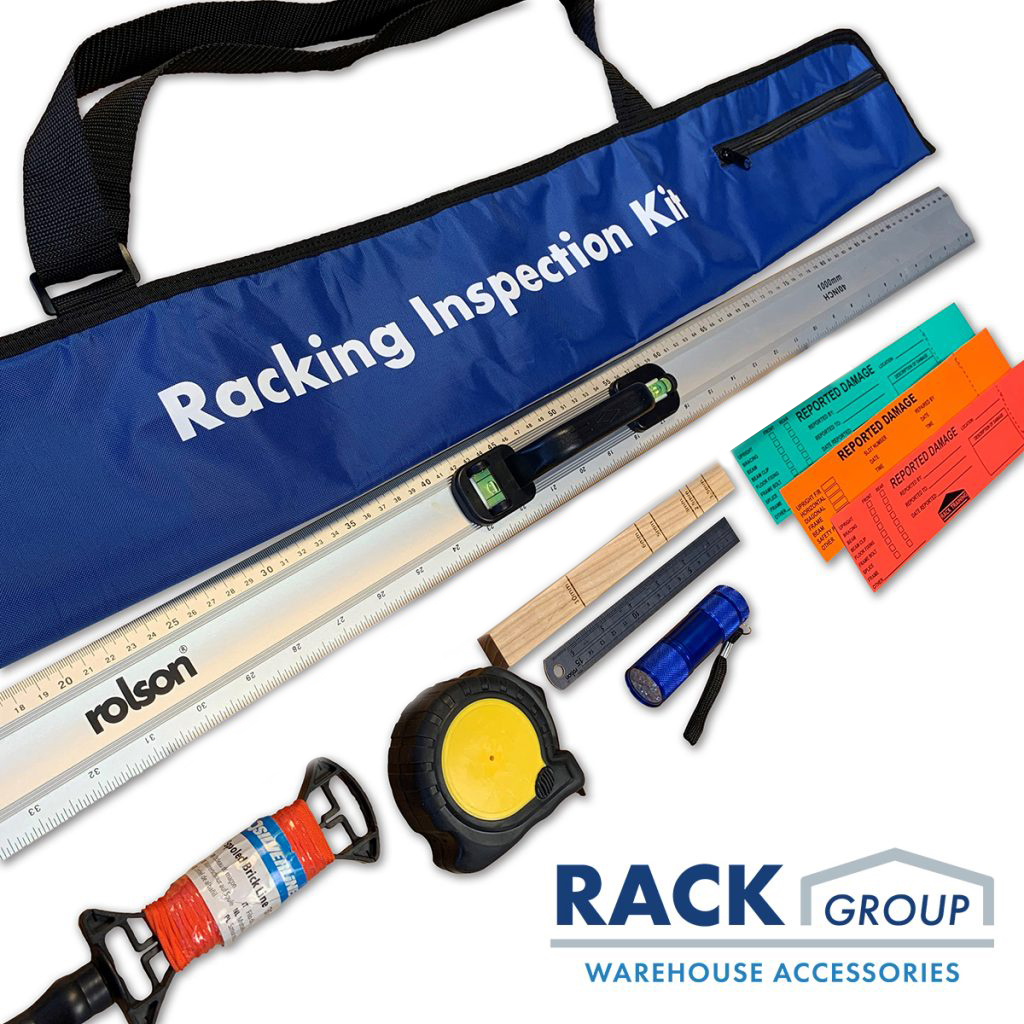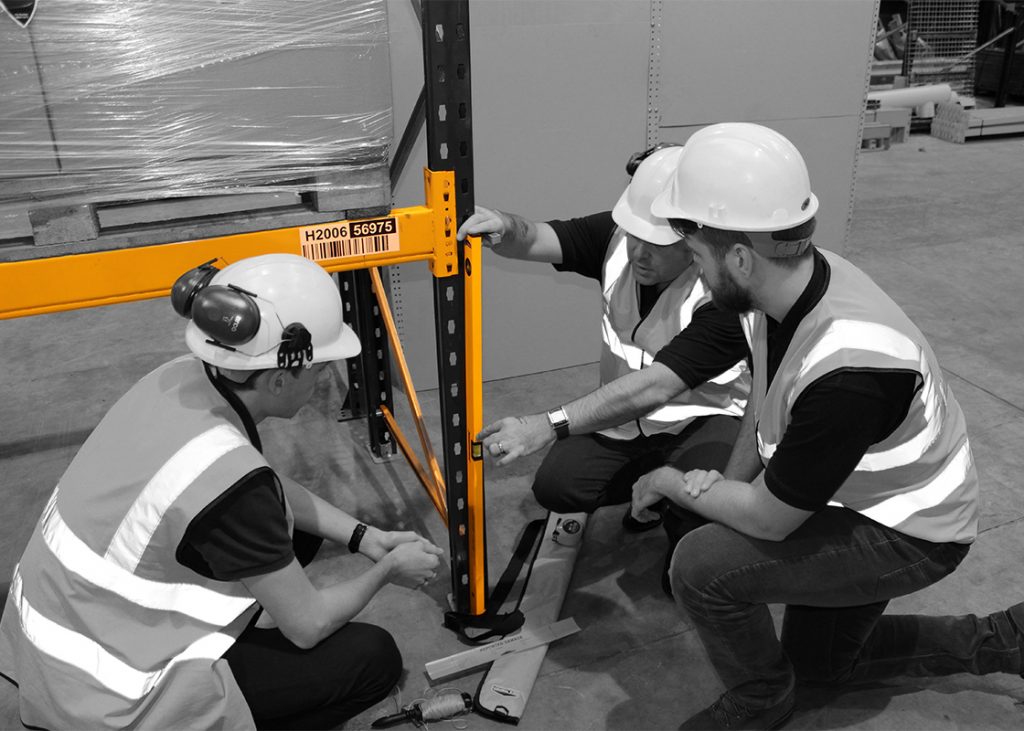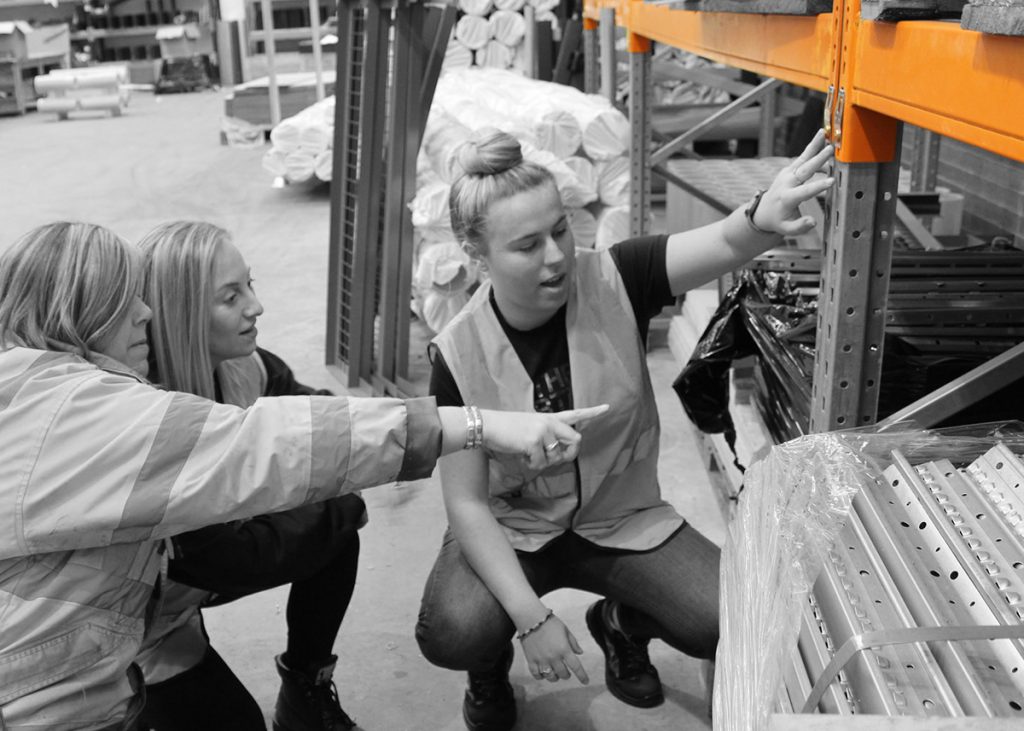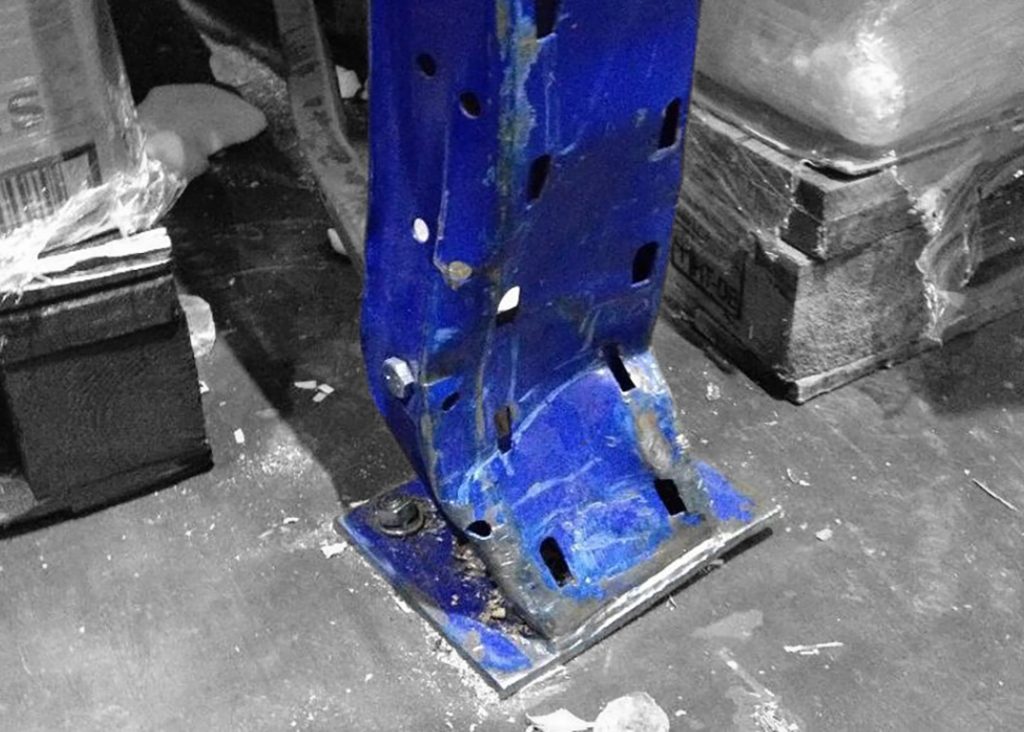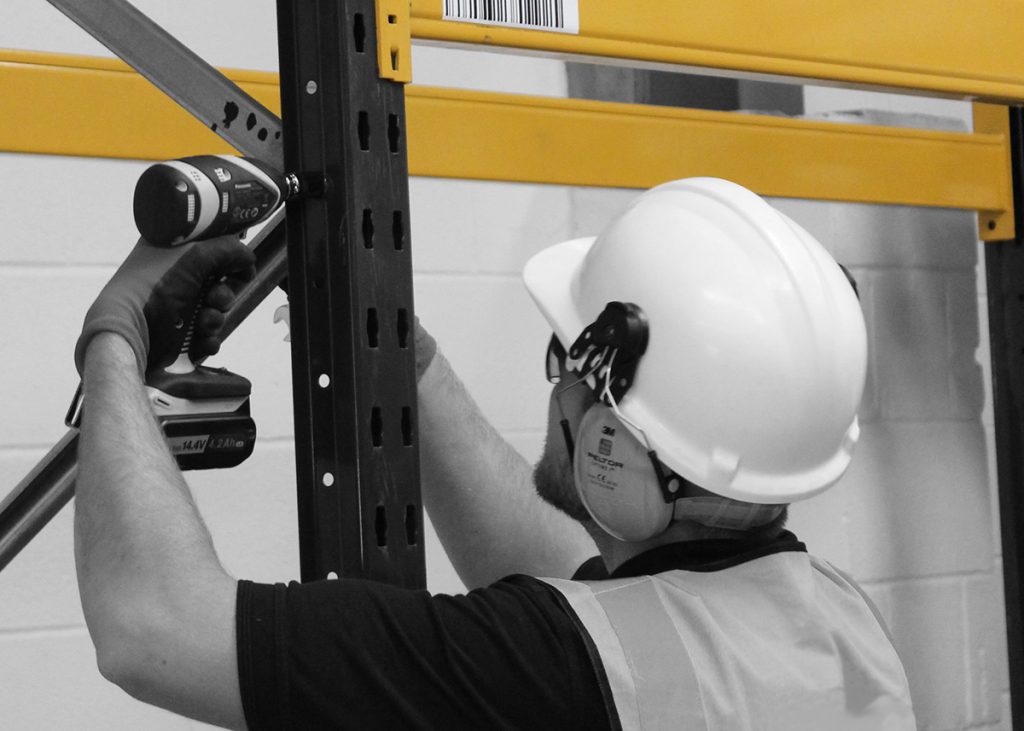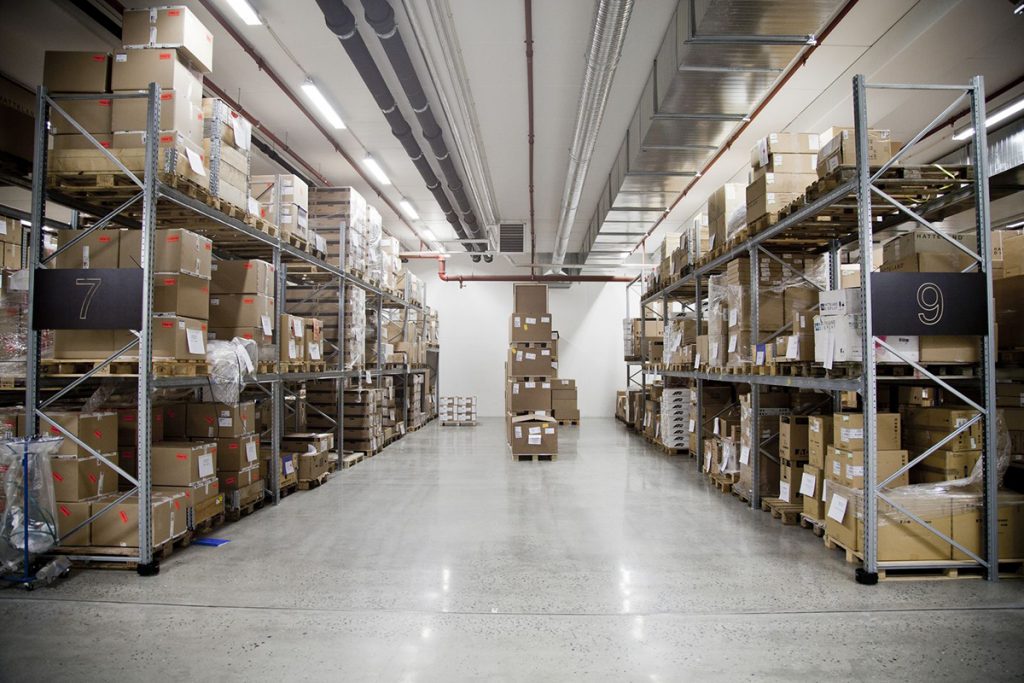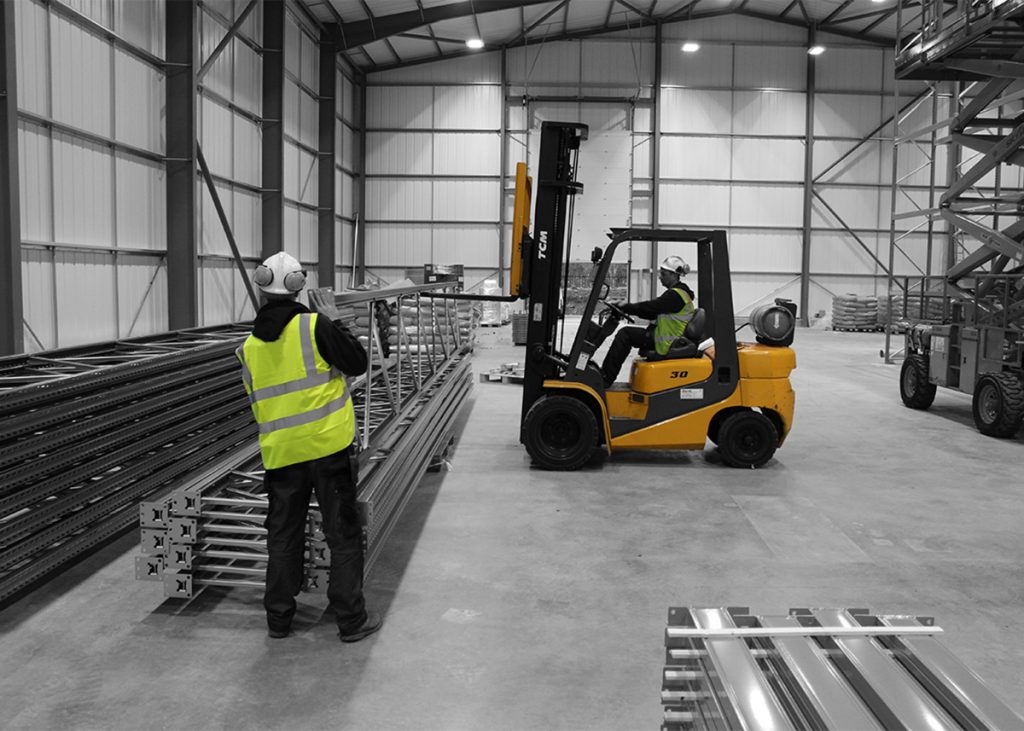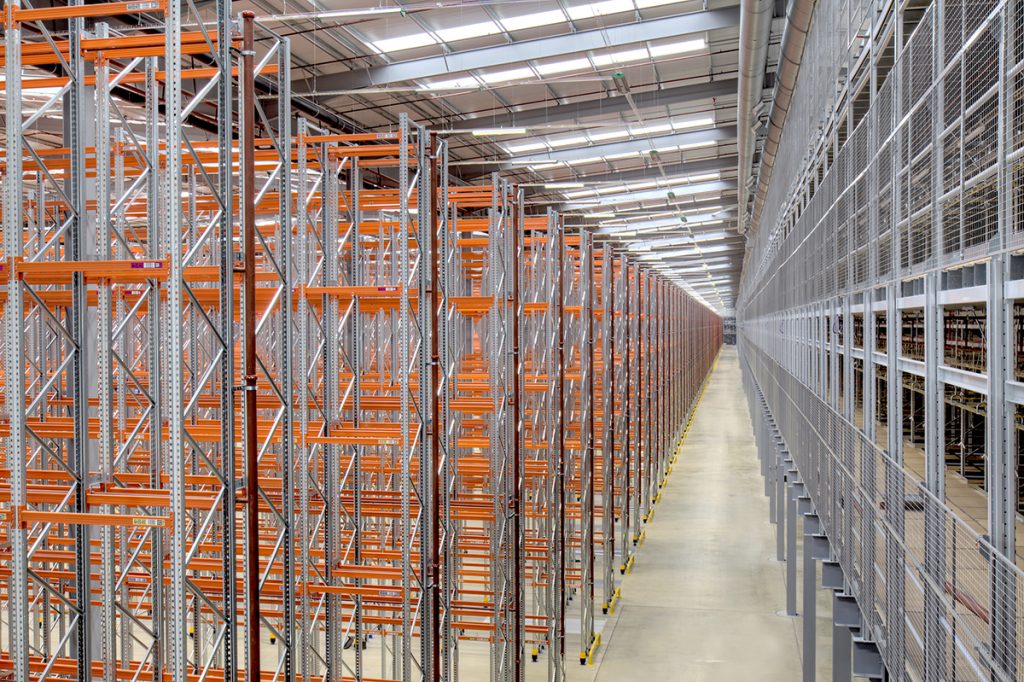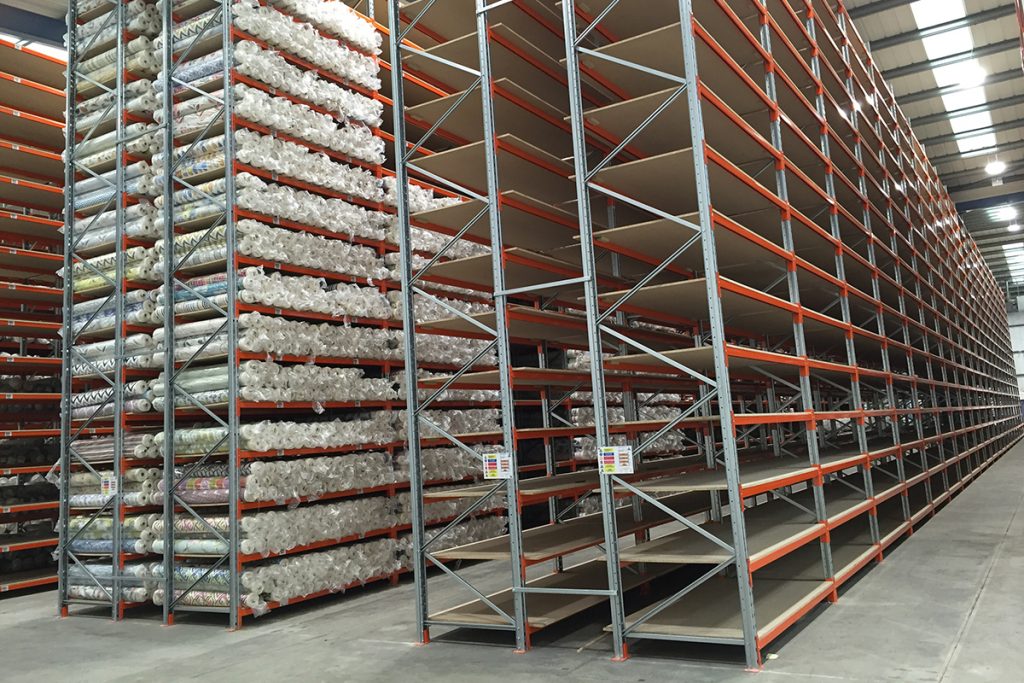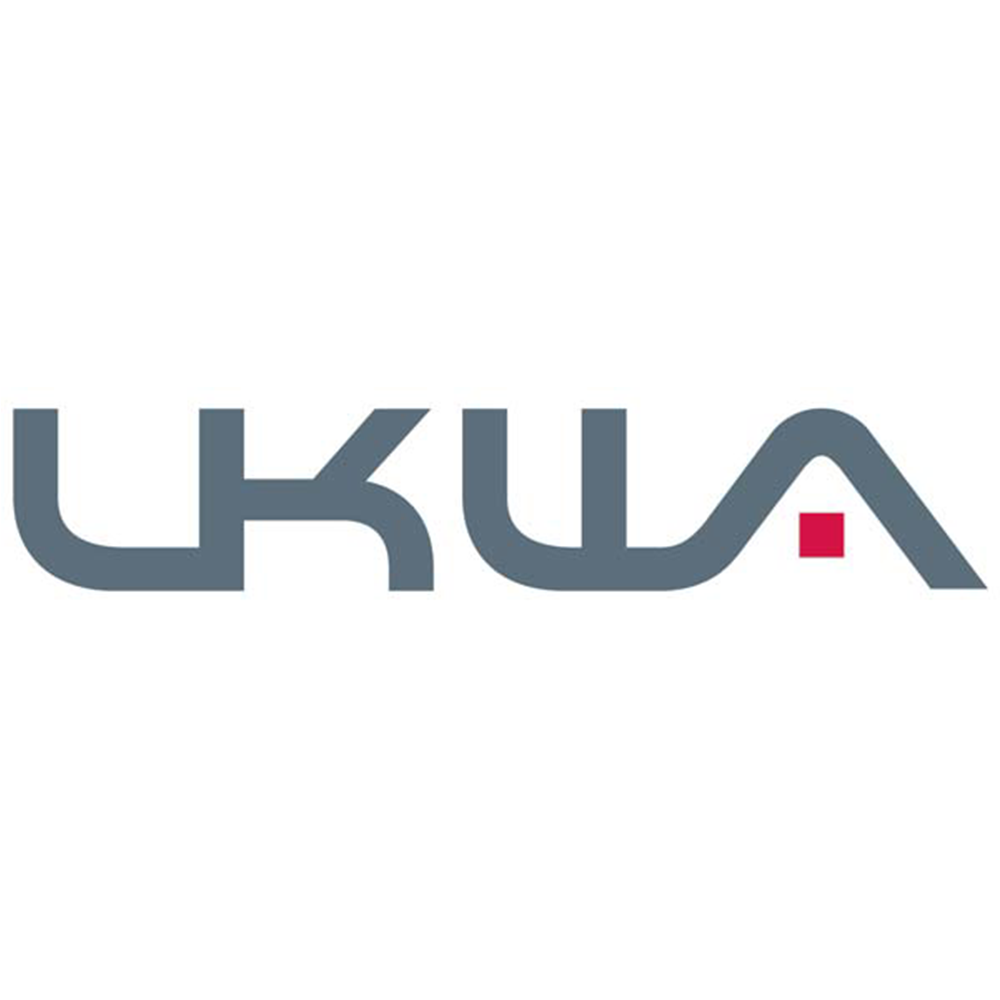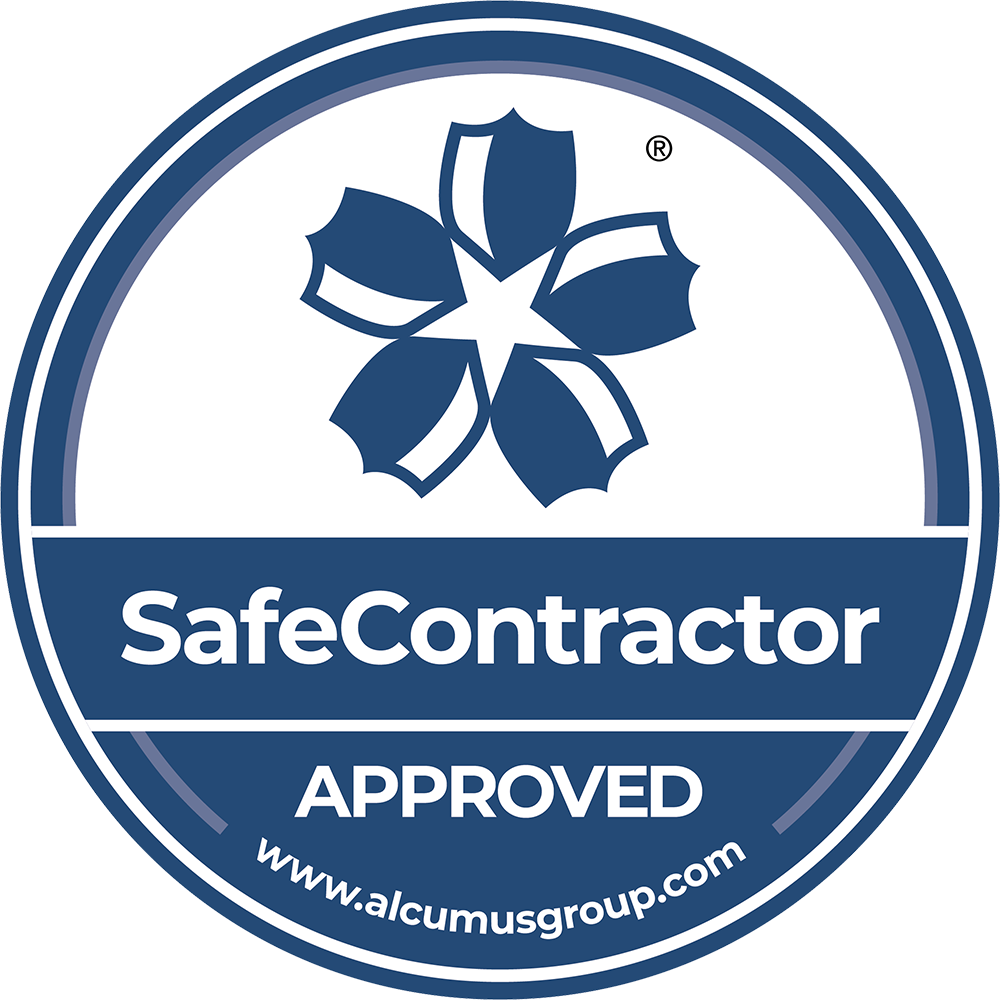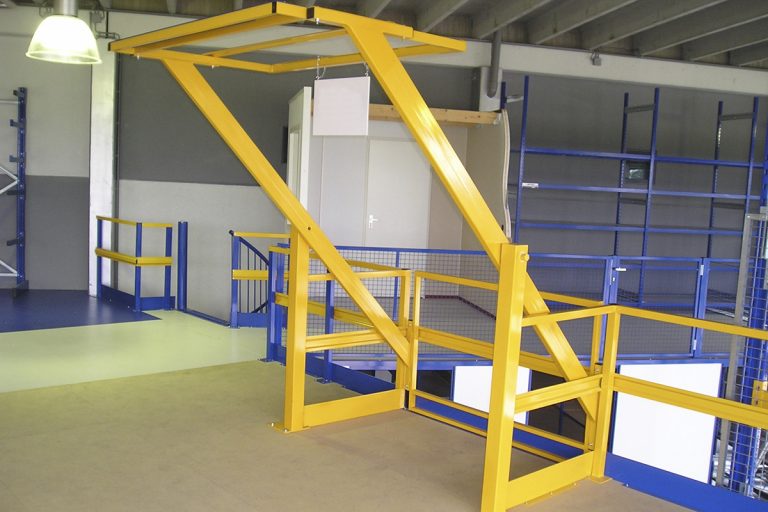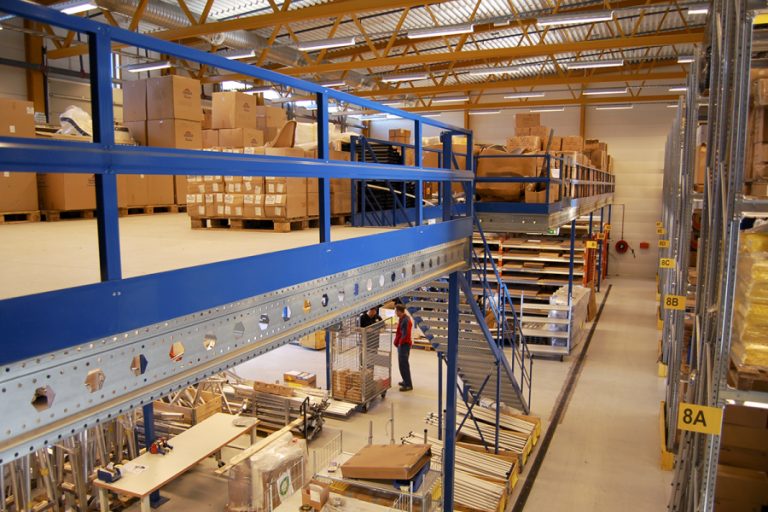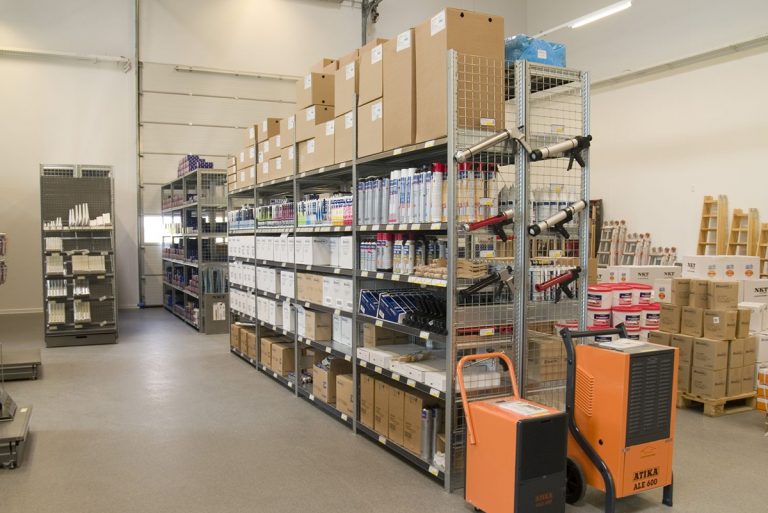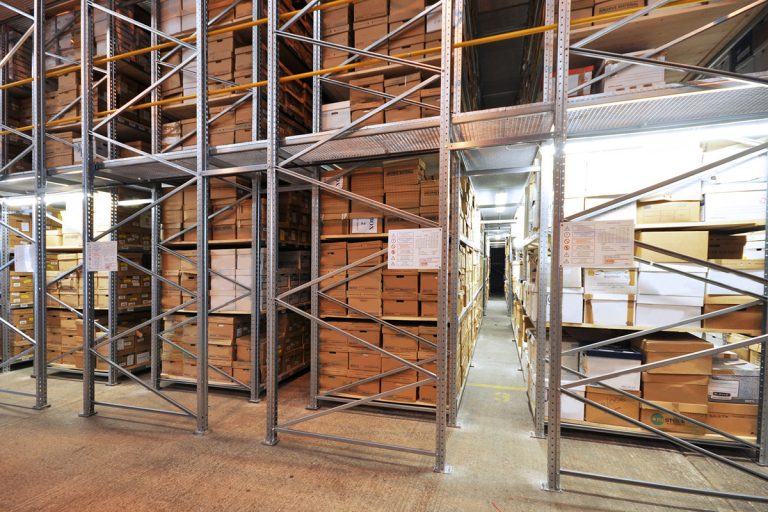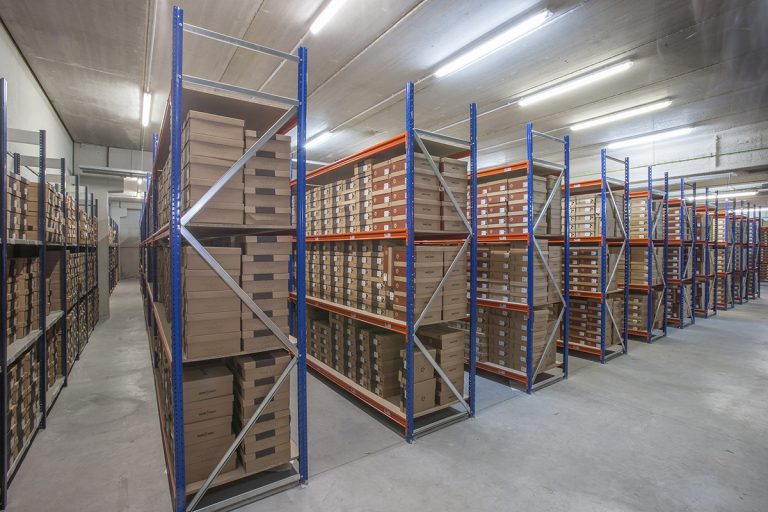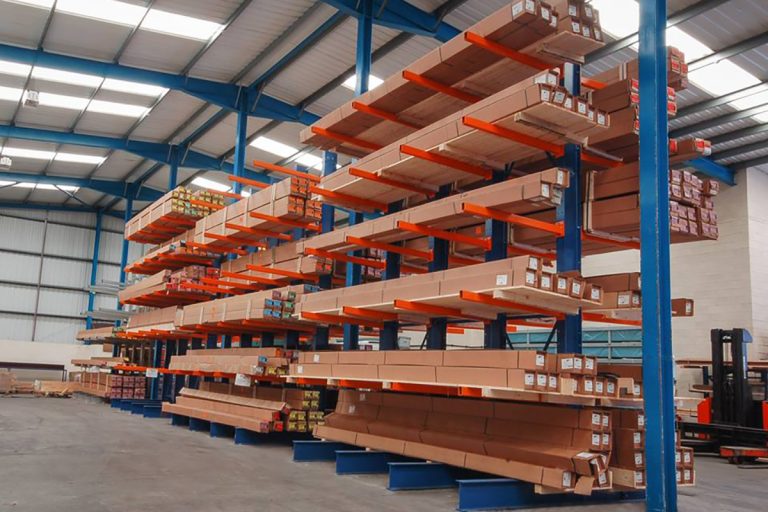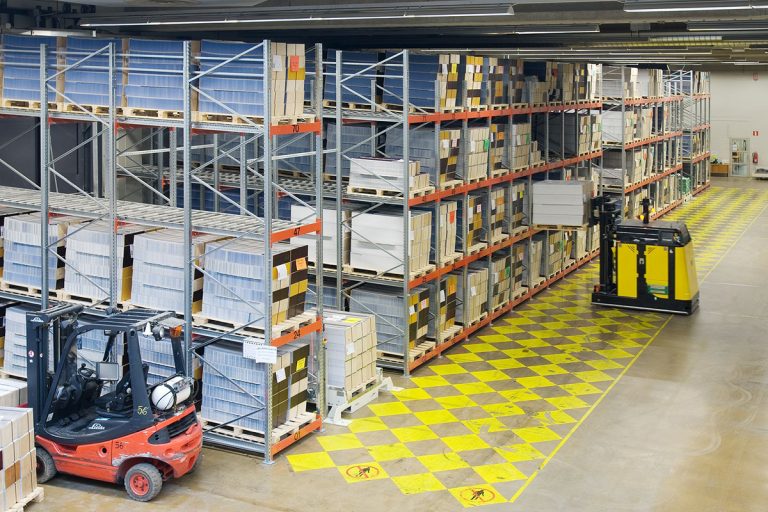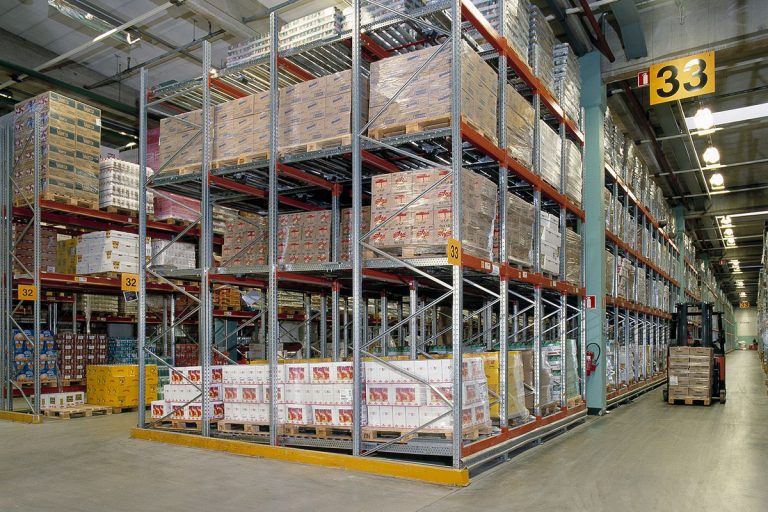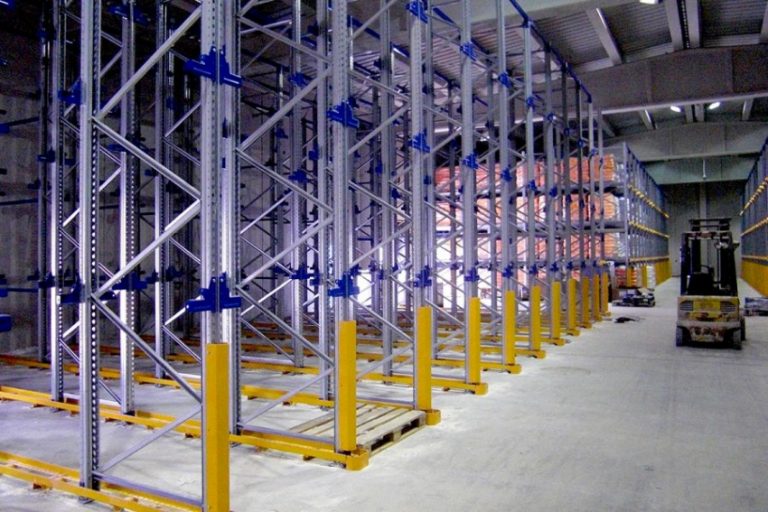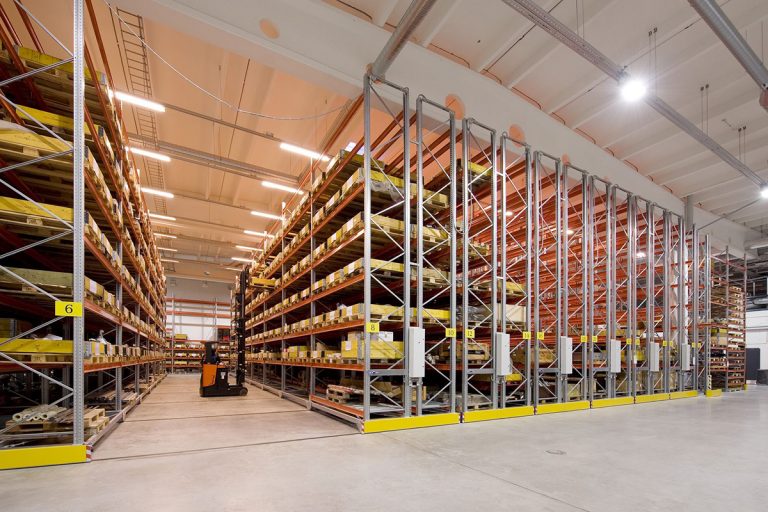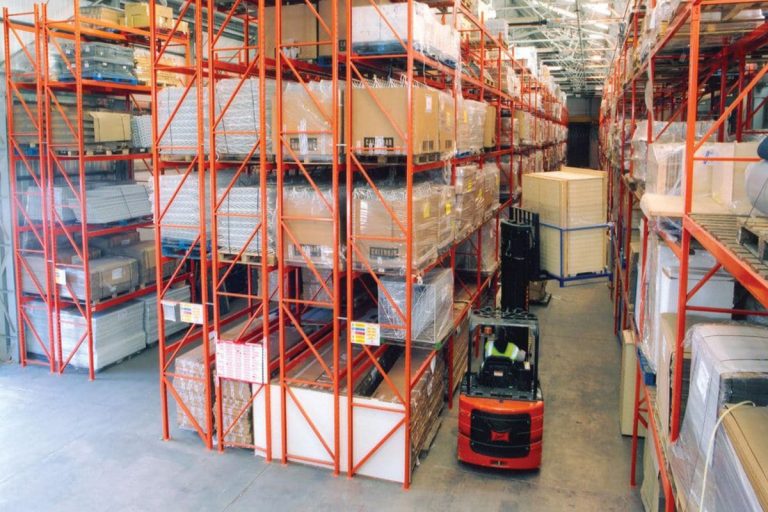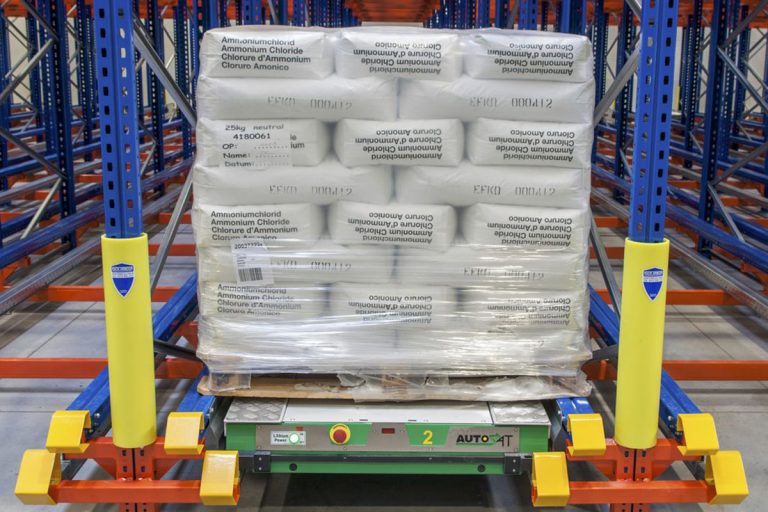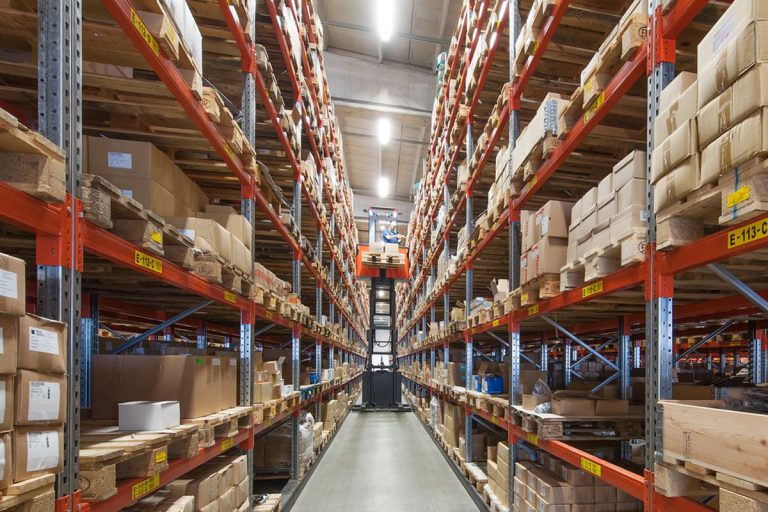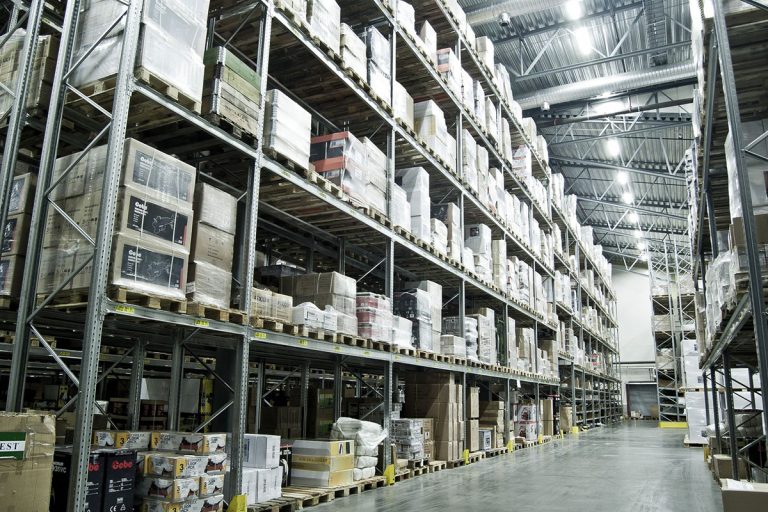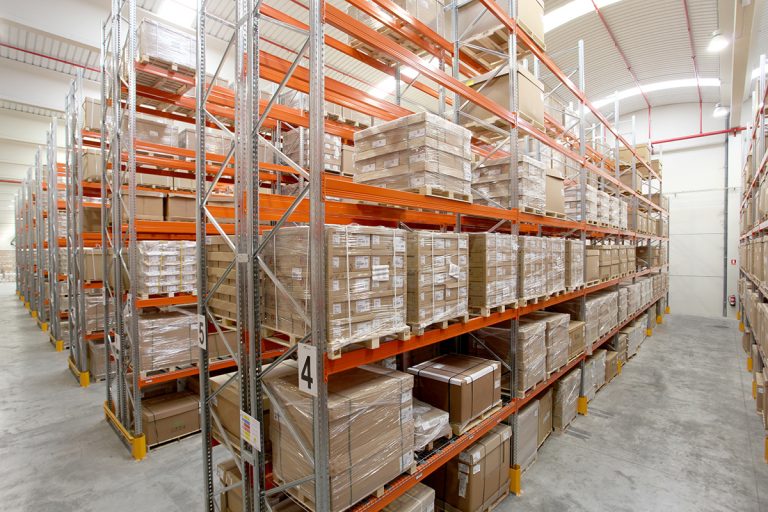The Importance of Regular Racking Inspections
Pallet Racking Inspections
Warehouses play a vital role in many industries by supporting storage, logistics, and distribution. However, they can also present significant safety risks, particularly with racking systems used for bulky materials storage. While racking systems are engineered to hold heavy loads and optimise storage efficiency, they are susceptible to damage over time. Everyday wear and tear, accidental impacts from equipment, and an inadequate maintenance schedule can compromise the integrity of any racking system. If these issues are left unchecked, they can lead to severe accidents, including racking collapses that can endanger workers and inventory. This underlines the importance of regular racking inspections, which are not only a legal requirement but a critical step in maintaining a safe warehouse environment.
The Standards and Regulations
The European Standard EN 15635 Steel Static Storage Systems - Application and Maintenance of Storage Equipment outlines safety regulations for pallet racking inspections and repairs. Specifically, Section 9.4.2.3 (Expert Inspections) mandates that inspections must be conducted by technically competent individuals every 12 months. These inspections should result in a detailed report with observations and recommendations for corrective actions, to be presented to the Person Responsible for Storage Equipment Safety (PRSES).
Safety Culture
Routine inspections go beyond meeting compliance standards; they play a key role in ensuring workplace safety and operational efficiency. Regular inspections allow for the early detection of minor issues before they escalate into costly or dangerous problems. By committing to these proactive measures, warehouses can maintain smooth operations, meet safety standards, and keep up with the fast pace of industrial work.
Additionally, regular inspections foster a culture of safety by systematically examining all racking components and addressing potential problems before they become critical. This approach not only enhances workplace safety but also promotes a sense of accountability among warehouse staff, increasing awareness of the crucial role racking systems play in daily operations. By prioritising proactive maintenance, warehouses can support continuous improvement and minimise disruptions caused by unexpected failures, enabling facilities to operate at peak efficiency. Book your Racking Inspection Today.
Rack Group: Your Partner for Racking Inspections
At Rack Group, we provide thorough racking inspection services to keep your warehouse safe, compliant, and efficient. The Rack Group name may have been born in 2002, but our work history, and love of all things racking, goes back to the 1980s. With over 40 years of experience and hundreds of satisfied clients, working with Rack Group ensures that your warehouse operations are in expert hands.
Our approach is based on years of industry experience and dedication to the highest standards, making us a trusted partner for businesses looking to strengthen their warehouse operations. We understand the complexities involved in running a warehouse, and our mission is to ensure that the racking systems that form the backbone of your storage processes are well-maintained and safe for day-to-day use.
Why Racking Inspections are Essential
1. Compliance with Industry Standards
Warehouses must adhere to strict safety regulations, such as those outlined in the European standard EN 15635 - Steel Static Storage Systems - Application and Maintenance of Storage Equipment. Section 9.4.2.3, Expert Inspections, specifies that inspections should be conducted by technically competent individuals every 12 months. A report containing observations and recommendations for any necessary actions must be presented to the Person Responsible for Storage Equipment Safety (PRSES).
Our racking inspectors are accredited by two distinguished bodies: the Storage Equipment Manufacturers Association (SEMA) and the Provision and Use of Work Equipment Regulations (PUWER). These standards are designed to protect both workers and inventory by mitigating risks associated with handling and storage. Regular inspections ensure these standards are consistently met, reducing the risk of penalties and maintaining a safe work environment. Compliance is not just about avoiding fines; it demonstrates a commitment to safety and operational excellence.
Regular inspections also provide documentation that can be crucial during audits or reviews by regulatory bodies. This documentation can serve as evidence of your facility’s adherence to established safety standards, giving you peace of mind and providing assurance to stakeholders, partners, and employees. When you can demonstrate that your warehouse meets all safety requirements, you gain a competitive edge, showing that your operations are reliable and safe.
2. Preventing Accidents
Damaged racking systems are a major safety hazard. If they fail, they can cause injuries to workers and damage to inventory. The costs of these incidents go beyond just repairs, often including compensation claims, regulatory fines, and the long-term impact of disrupted operations. Inspections help identify issues early, allowing for repairs that can prevent accidents. By spotting structural weaknesses — whether due to overloading, wear, or accidental impacts — inspections act as a key risk management tool, ensuring problems are addressed before accidents happen.
Beyond preventing injuries and damage, inspections also help to foster a safer working environment, which can lead to better morale and productivity among staff. Employees who feel safe at work are more likely to stay focused and perform well, and they are less likely to miss work due to injury. In essence, investing in regular inspections translates to fewer disruptions, more efficient workflows, and an overall positive atmosphere in the workplace.
3. Saving Money
Fixing minor racking damage early is much cheaper than dealing with a major failure. Waiting until something breaks is inefficient and can lead to unplanned disruptions, which are costly to productivity. Regular inspections allow for preventive maintenance, reducing downtime and saving money. By identifying problems before they become serious, businesses can avoid the high costs that come with unexpected system failures. This proactive approach to maintenance keeps repairs targeted and manageable, preventing more expensive issues from developing.
Cost savings also extend to avoiding potential regulatory fines and legal costs. Non-compliance can be extremely costly, not only in terms of fines but also in the time and resources required to correct issues after a violation has been identified. By addressing issues early and continuously maintaining the integrity of the racking systems, companies can avoid these unexpected financial hits and allocate their resources to growth and development instead.
4. Protecting Your Investment
Racking systems are a significant investment for any warehouse. Routine inspections help extend the life of these systems by identifying wear and tear early, ensuring that you get the best return on your investment. Keeping racking systems in good shape isn't just about safety — it’s also about protecting the money you have invested. By making racking systems last longer, businesses can delay the need for costly replacements and maintain effective storage for longer periods.
Furthermore, well-maintained racking helps ensure that inventory remains secure and undamaged, contributing to improved overall efficiency and less waste. Damaged pallet racking can cause accidents that lead to lost or spoiled products, which can hurt profitability. Protecting the integrity of your racking systems ultimately helps to protect your bottom line.
The Racking Inspection Process
1. Visual Assessment
Our inspectors conduct a thorough check of the racking system for any visible signs of damage, such as bent uprights, missing bolts, or overloading. Visual inspections are the first step in identifying any obvious issues that could compromise safety. The inspection covers all parts of the racking system to make sure everything meets safety standards. Visual assessments are critical because even small signs of damage, like minor bends or scratches, can indicate larger underlying issues.
Our inspectors are trained to recognise these seemingly minor problems before they become a bigger hazard. On a rare occasion moving Rack Armour or stock might be necessary to see any damage hidden or obstructed form view. However, installing Rack Armour can reduce forklift tine impacts on pallet racking by up to 80% when compared to other racking protection. We ensure that every element, from beams to bolts, is scrutinised so that nothing is overlooked, and safety is prioritised.
2. Load Verification
3. Structural Integrity Evaluation
4. Detailed Reporting
It's important to make sure that racking systems are not overloaded. Overloading can cause serious failures that put both the racking and the stored items at risk. Our inspections verify that the loads comply with manufacturer specifications, ensuring that the racking systems are being used safely and effectively. We also look at how the warehouse staff handle the loading process. Improper stacking or distribution of weight can lead to stress points that increase the risk of collapse. By verifying load limits and providing recommendations on best practices for loading, we help our clients maintain not only compliance but also safety for everyone involved. Rack Group can provide compliant and SEMA-approved Weight Load Notices.
We assess the overall stability of the racking system, looking for potential weaknesses or risks. This evaluation goes beyond just looking for visible damage; it involves a detailed examination of how well the racks are holding up under pressure, including checking joints and alignment. Identifying these hidden risks is crucial to preventing unexpected failures. During structural evaluations, inspectors use tools to assess stress levels and classify actions using SEMA’s Red, Amber, and Green system. This step is vital in determining whether the racking system is still performing as intended, or if it needs maintenance or reinforcement to keep operating safely and efficiently.
Rack Group provides a full report that outlines any issues found, highlighting the causes of racking damage, recommended repairs, and timelines for fixing them. These reports aren’t just records of what’s wrong — they’re tools that help managers make decisions. Our reports give clear guidance on what needs to be fixed and when, helping facilities plan their maintenance work efficiently. Our reports also serve as a roadmap for future inspections and improvements. By keeping a detailed history of the condition of your racking systems, we can help identify patterns in wear and damage, allowing for smarter planning and budgeting for maintenance. This proactive approach helps avoid surprises and ensures that warehouse operations continue without disruption.
The Consequences of Neglecting Racking Inspections
Neglecting routine pallet racking inspections can have serious consequences, such as:
Operational Disruptions:
Higher Accident Risk:
Fines and Legal Issues:
When racking fails unexpectedly, it can cause significant disruptions, delaying order fulfilment and affecting the company’s reputation. Unplanned downtime can also lead to lost business opportunities and a drop in customer trust. Additionally, these disruptions often have a ripple effect across the entire supply chain. When one warehouse cannot fulfil orders due to an equipment failure, it affects suppliers, delivery schedules, and customers. This kind of disruption not only impacts financial performance but can also hurt relationships with clients and suppliers, potentially leading to a long-term loss of business. It is always best to know the main reasons behind racking collapses and how to avoid them.
Racking collapses can result in severe injuries to workers, significant inventory losses, and reputational damage due to legal and financial repercussions. According to official Health and Safety statistics for 2022-2023, workplace incidents related to safety negligence continue to impose substantial costs on businesses across the UK.
Don’t become part of these statistics — ensure your warehouse is compliant and safe by booking a racking inspection today.
Not meeting safety standards can result in fines or other legal consequences. Repeated safety violations can attract more scrutiny from authorities and lead to further penalties. Always refer to governing bodies, legislation, and the best health and safety practices for guidance. The Health and Safety Executive (HSE) is the UK’s regulator for workplace health and safety. It helps to prevent work-related deaths, injuries and ill health.
Rack Group Case Studies: Ensuring Warehouse Safety and Efficiency
Rack Group's inspections have consistently delivered significant value to our clients by providing proactive solutions to maintain warehouse safety and operational efficiency. Below, we've highlighted some case studies that demonstrate our expertise and commitment to quality service.
1. Preventing Structural Failures and Addressing Recurring Issues for Long-term Savings
In a high-traffic warehouse, our inspection team identified significant structural damage that posed a major risk of collapse. Without our timely intervention, this could have led to disastrous consequences, including severe injury, operational disruptions, and high costs. By performing a detailed inspection, Rack Group was able to catch the problem early and implement corrective measures, ultimately saving the client substantial money in repairs and inventory loss.
In addition, the warehouse experienced recurring issues with minor rack damage, which was causing repeated repair costs. Rack Group identified improper loading practices and uneven weight distribution as the root causes. We collaborated with the client's team to improve loading techniques and provided training to warehouse staff, which significantly reduced the frequency of damage incidents.
As a result, the client saw a substantial reduction in maintenance costs and a more efficient operation overall. This combined example shows how proactive maintenance, supported by regular inspections and targeted staff training, is essential for mitigating operational risks, preventing future issues, and ensuring that warehouses can maintain safe, uninterrupted operations while reducing long-term costs.
2. Partnering with Capita for a Seamless Warehouse Relocation
Rack Group also partnered with Capita for a large-scale warehouse relocation involving 14,000 pallet locations. Capita, an international business process outsourcing company, required a seamless relocation that would not disrupt their ongoing operations. Rack Group worked closely with Capita to plan the relocation, which involved evaluating six potential properties in the North-East of England and designing racking layouts to optimise storage space.
The relocation was conducted in four carefully planned phases over ten weeks, ensuring zero disruption to operations. Rack Group sourced and installed adjustable racking, while the stored items were transported gradually after each installation phase. Regular inspections were conducted throughout the relocation process to ensure every aspect of the installation met safety standards and remained free from damage. To further protect the new racking from vehicle impacts, barriers were installed to maintain racking integrity.
The project was delivered on time and within budget, with Rack Group providing a single point of contact for sourcing, installation, and ongoing inspections. This minimised complexity for Capita, allowing them to focus on other aspects of the move.
As Mary Collins, Head of Projects at Capita, noted, "Rack Group worked with us every step of the way, from layout design to planning, phasing, and installation. I would have no hesitation in recommending Rack Group for any size of project."
Rack Group, part of IWS Group, continues to support Capita with ongoing inspections and training. To maintain safety and compliance, it is recommended to inspect a warehouse every 6 to 12 months. According to the Health and Safety Executive (HSE), 135 workers were killed in work-related accidents in Great Britain during the 2022/23 period. Additionally, approximately 561,000 workers sustained self-reported non-fatal injuries in the workplace during the same timeframe. It is crucial to carry out weekly inspections of racking as well as annual reports through SEMA or PUWER-approved Inspectors. Book your next racking inspection with Rack Group.
The Rack Group Difference
These case studies highlight Rack Group's expertise in delivering comprehensive, tailored solutions that enhance safety, prevent costly damage, and support efficient warehouse operations through installation, relocation, and inspections. Whether it's preventing structural failures, improving operational practices, or managing a complex warehouse relocation, Rack Group delivers reliable, end-to-end support that drives results.
Why Choose Rack Group for Your Racking Inspections?
Over 40 Years of Expertise:
Rack Group brings over four decades of industry expertise, with some team members having been with us for 30 years and counting. This wealth of experience, combined with our history of operations, allows us to leverage our knowledge, resources, and industry-wide connections to benefit our customers. Our longevity in the industry demonstrates a commitment to quality and reliability that ensures our clients will always receive the best possible service.
SEMA and PUWER-accredited Inspectors:
Our inspectors are fully trained and certified to SEMA and PUWER accreditations, ensuring that our inspections meet the highest industry standards. These accreditations mean you can trust us to follow the best practices set out by the industry experts.
Complete Service Offering:
We provide full support for your racking needs, from inspections to repairs. Our comprehensive approach ensures all safety aspects are covered, reducing risks and improving reliability.
Customised Solutions:
We work with you to create a maintenance schedule that fits your facility's specific needs. Every warehouse is different, and our customised solutions address each facility's unique challenges.
Detailed Reporting:
Our reports give you actionable insights to solve problems quickly. These insights help guide future maintenance, contributing to better safety standards over time. Our comprehensive services also include consulting to help warehouse managers develop a long-term strategy for safety and efficiency. We don’t just offer one-off solutions — we build partnerships that last, offering support that evolves with your warehouse’s needs.
More Than Just Inspections: Full Warehouse Safety Solutions
In addition to racking inspections, Rack Group offers a full range of services to make your warehouse safer:
Inspections
Installations and Alternations
Maintenance and Repairs
We provide comprehensive racking inspections, carried out by our certified SEMA-approved Racking Inspectors (SARI), ensuring your warehouse systems comply with all safety and regulatory standards. Regular warehouse racking inspections help identify potential issues early, minimising the risk of damage, costly repairs, and operational downtime. Additionally, we can also offer PUWER-approved pallet racking inspections to ensure full compliance with health and safety requirements.
Our team can design, supply, install, and modify pallet racking systems to meet your specific operational needs. From initial setup to system alterations, we ensure that your warehouse storage solutions are optimised for safety, efficiency, and scalability. Whether it’s pallet racking, cantilever racking, drive-in racking, or mezzanine systems, we have the expertise to handle a variety of installations for all racking types tailored to your requirements.
We provide ongoing maintenance and repair services to keep your racking systems in top condition. Our proactive maintenance helps extend the lifespan of your equipment, while our repair services quickly address any damage to prevent disruptions.
Training
Impact Protection
Warehouse and Racking Accessories
Rack Group offers comprehensive training programs for warehouse staff, focusing on the proper maintenance, use, and safety of racking systems. Educating your team on best practices ensures safer operations and reduces the risk of avoidable damage or accidents. We provide a racking inspection course for warehouse staff so they know how to safely maintain and use racking systems. Racking inspection training is a crucial part of our approach, as it educates staff on the best practices for maintaining a safe warehouse environment.
We supply and install advanced impact protection solutions, including barriers, column guards, and rack protectors. These products are designed to minimise damage from forklifts and other warehouse vehicles, enhancing the overall safety of your racking systems.
We offer a variety of warehouse accessories such as load notices, column guards, and safety barriers. These accessories help to protect your racking infrastructure, improve efficiency, and maintain a safe working environment.
Schedule Your Racking Inspection Today
Don’t wait for an accident to highlight the need for racking maintenance. The risks of ignoring such an important part of warehouse safety are too great. Take a proactive approach by scheduling an inspection with Rack Group. Our expert team is here to help you protect your workers, safeguard your inventory, and ensure that you are meeting all safety standards. Choosing Rack Group means investing in a safer, more efficient future for your business.
Proactive safety is not just about compliance; it’s about making a commitment to operational excellence. With Rack Group, you can rest assured that your warehouse will meet and exceed the highest standards of safety, efficiency, and productivity. Let us help you take the next step towards a stronger, safer, and more resilient warehouse environment.
Discover More About Rack Group
Rack Group, as part of IWS Group, is driven by a commitment to safety, innovation, and customer satisfaction. Whether you need expert racking inspections or tailored safety solutions, Rack Group is your trusted partner for optimising warehouse operations.
We offer a comprehensive range of services, including pallet racking inspections, rack inspection services, racking inspection training, and a racking inspection course to ensure your warehouse remains compliant and efficient. Our expertise extends to installations and alterations, maintenance and repairs, training, impact protection, and warehouse and racking accessories.
Explore our services and products to ensure your racking systems meet the highest safety standards. View our case studies to see how we’ve helped businesses prevent costly disruptions and enhance operational safety. For the latest insights, check out our blog and contact us today to learn how Rack Group can support your warehouse safety needs.
Latest News
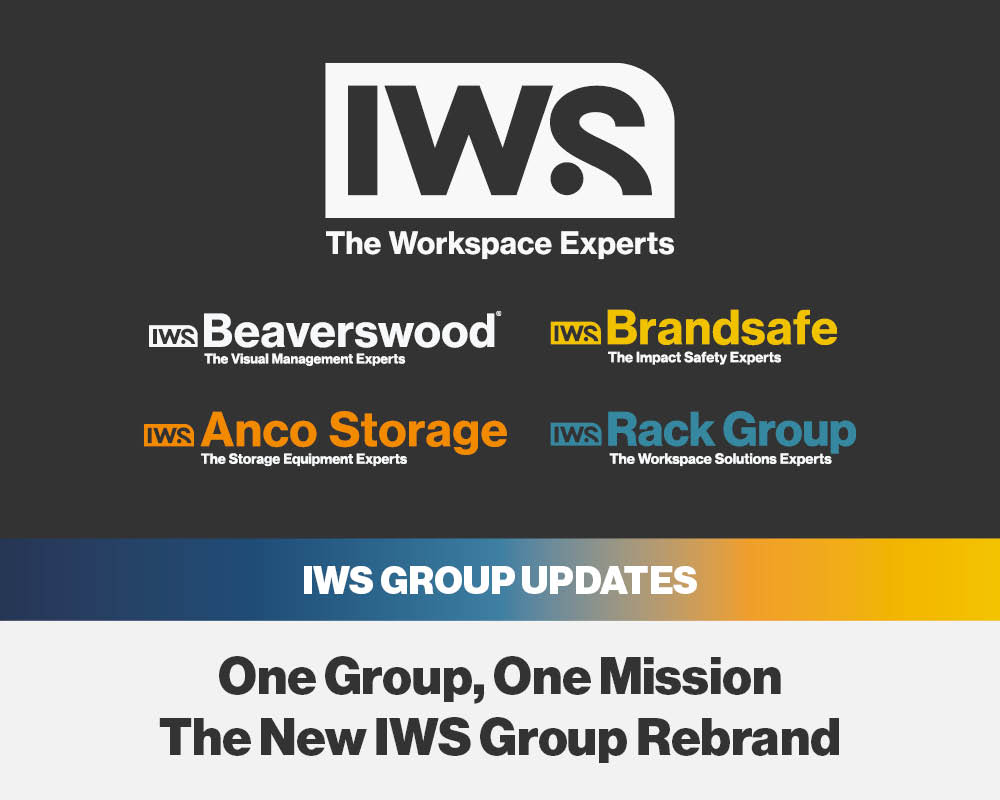
The IWS Group Rebrand: One Group. One Mission.
A New Chapter for Rack Group: Stronger, Smarter, Safer We’re excited to announce the next chapter for Rack Group as part of the wider IWS Group rebrand. This refresh unifies all businesses within the group under a single vision, and Rack …
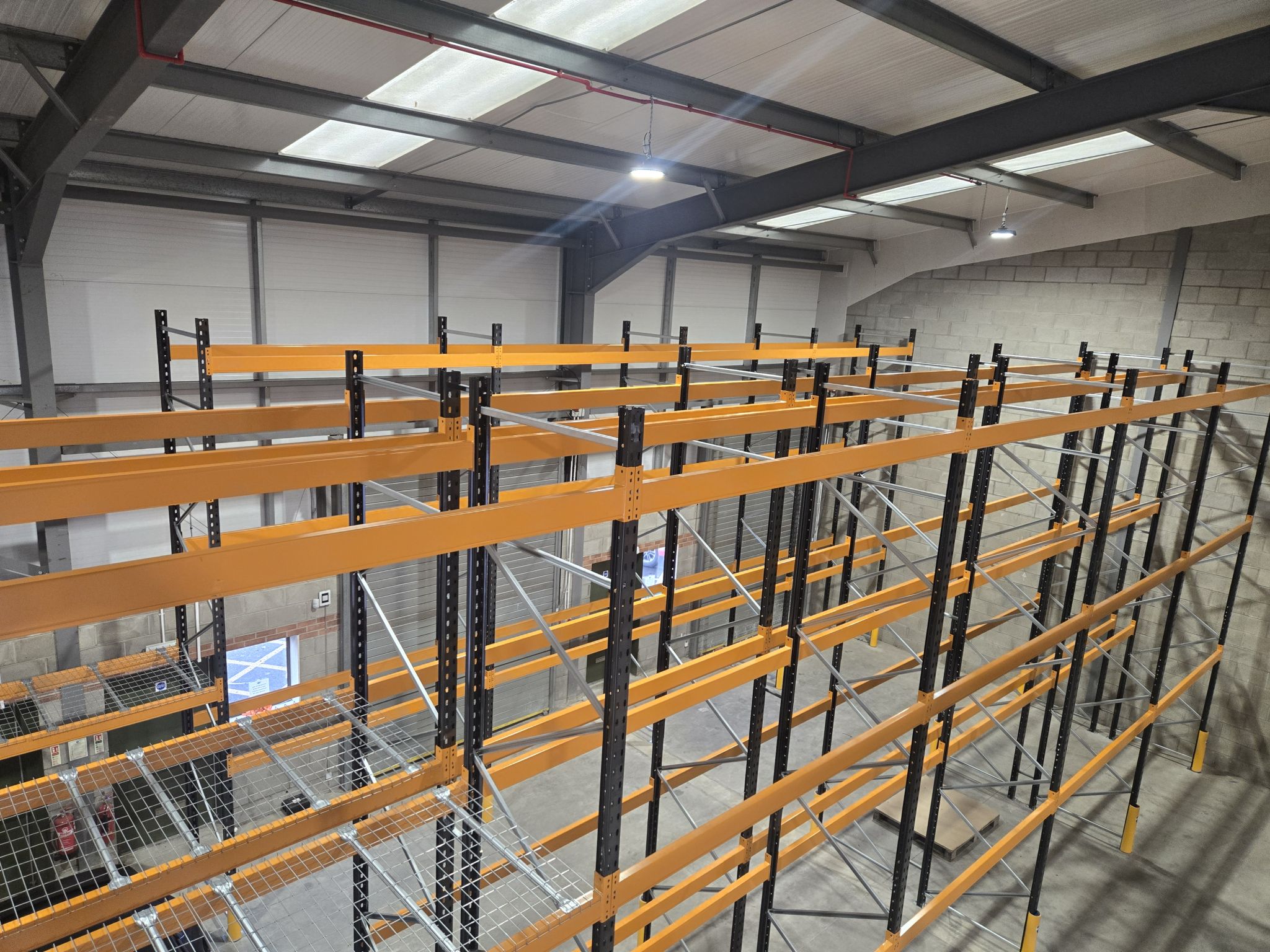
Optimising Warehouse Storage for RITS Logistics
Rack Group partnered with Rail Installation & Technical Services Ltd to design and install a tailored Link 51 pallet racking system, complete with Rack Armour® upright protection. The project maximised capacity, improved safety, and future-proofed their South West warehouse for growth.
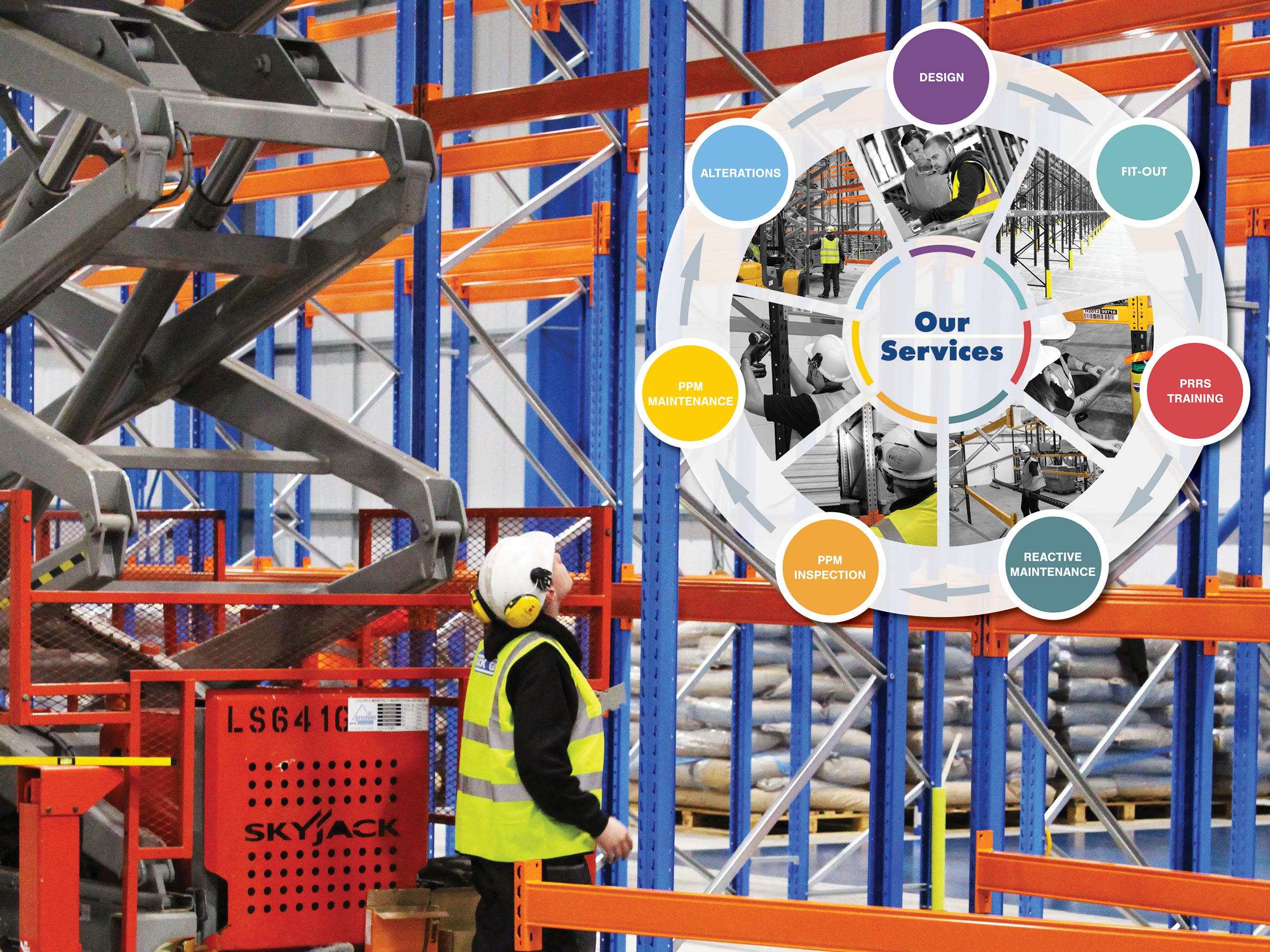
Top 10 Racking Regulations for Warehouse Safety
Understanding and complying with racking regulations is essential for maintaining a safe, efficient and legally compliant warehouse. In this guide, Rack Group outlines the top 10 UK regulations every warehouse owner and site manager should know – helping you reduce risk, avoid costly damage, and protect your workforce.

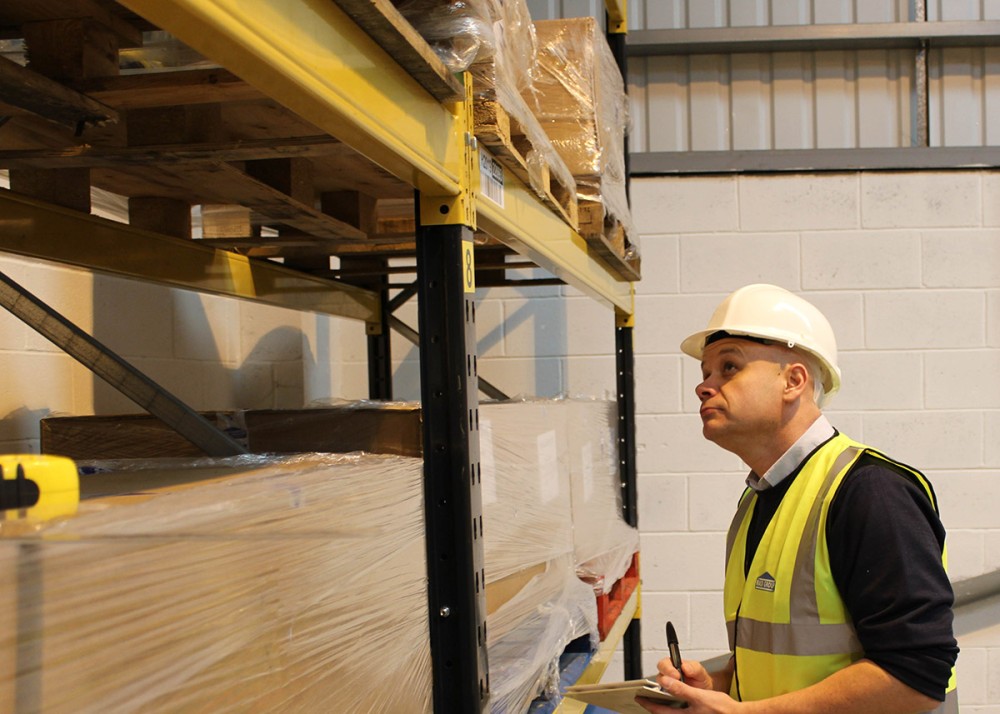
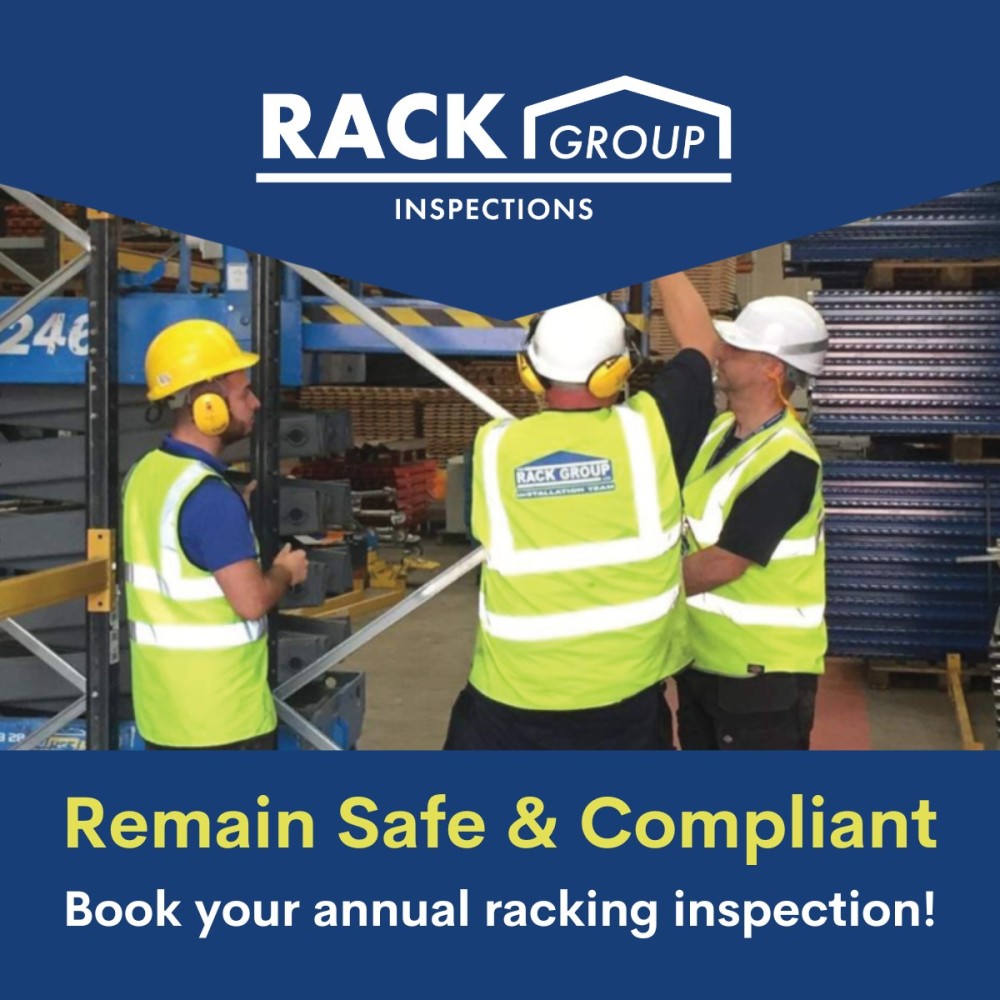
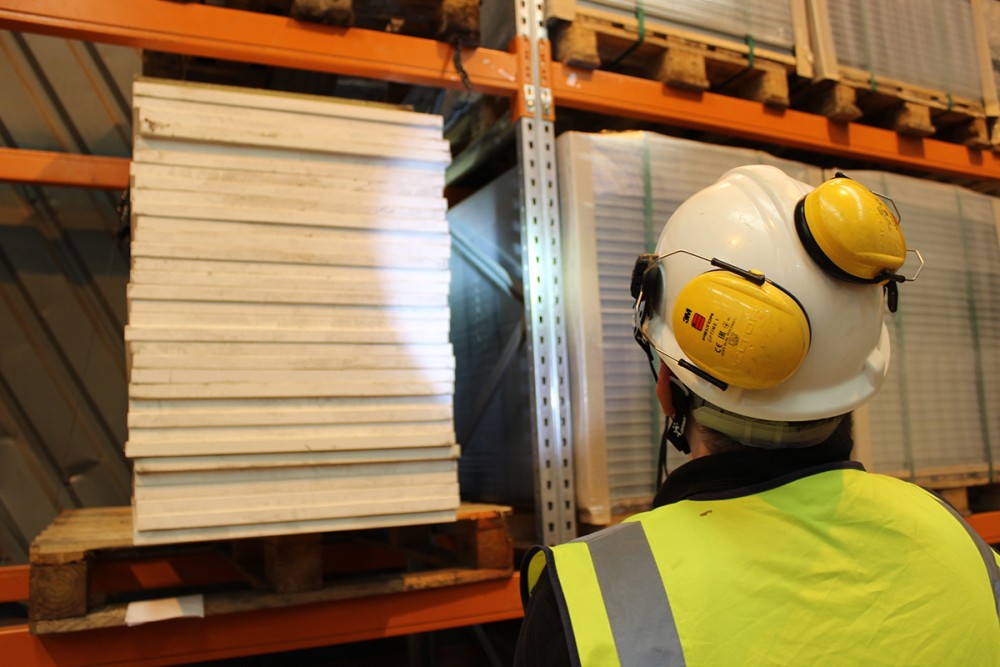
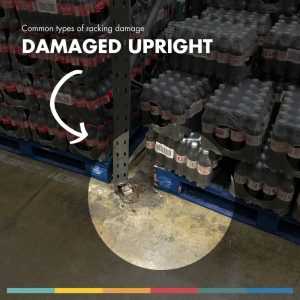
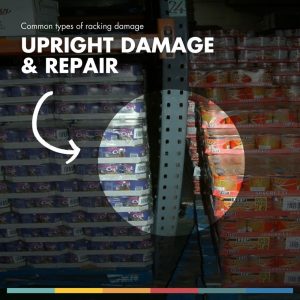
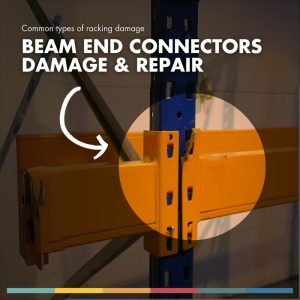
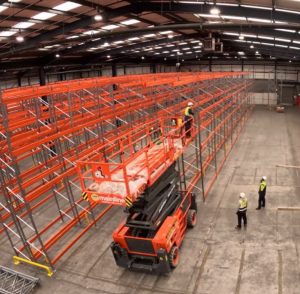
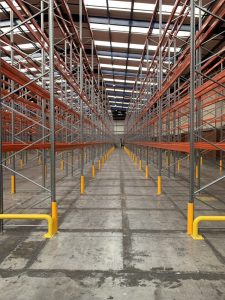

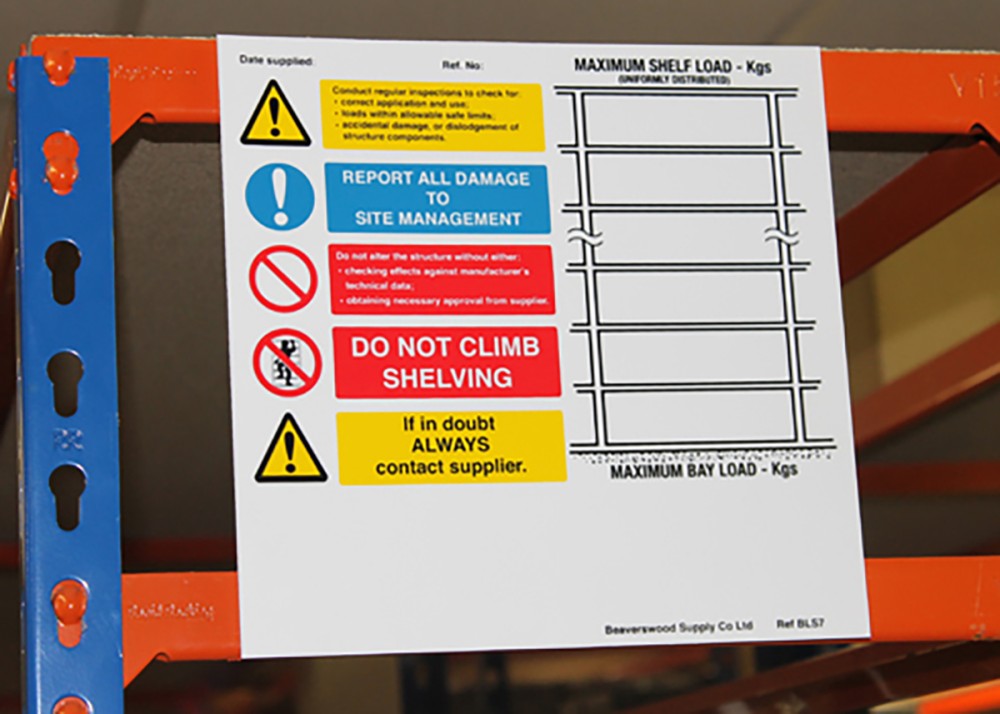
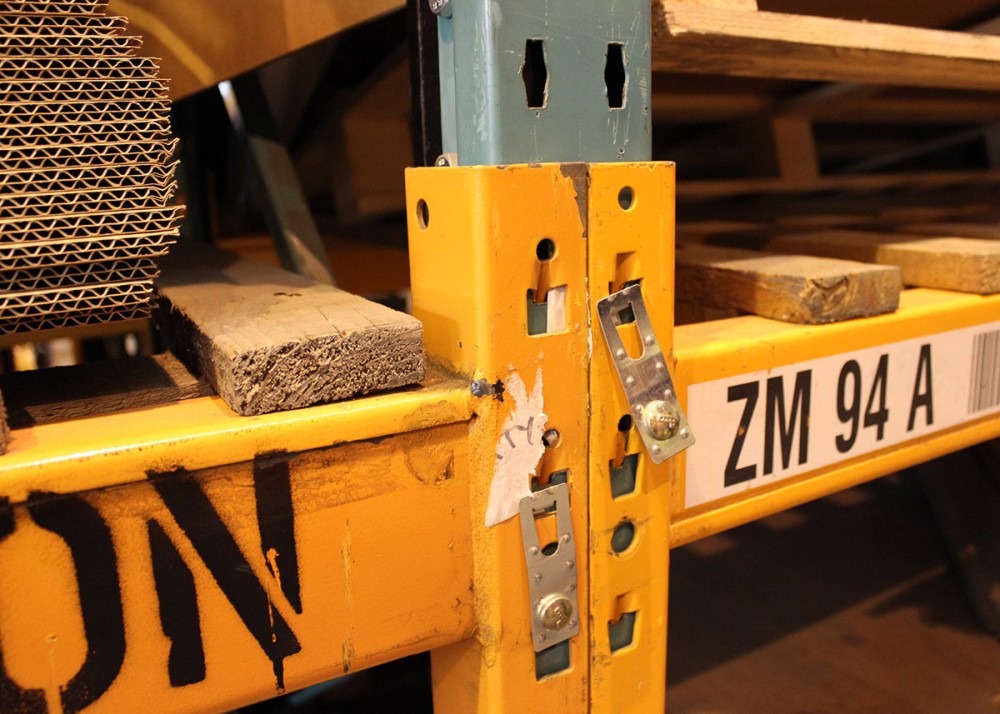
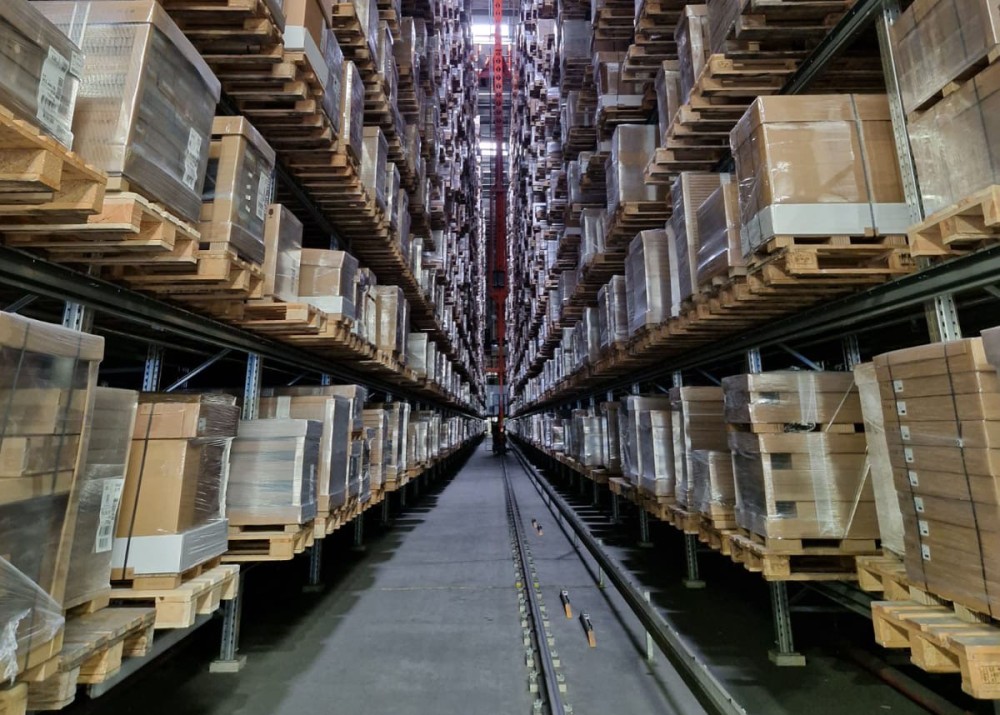
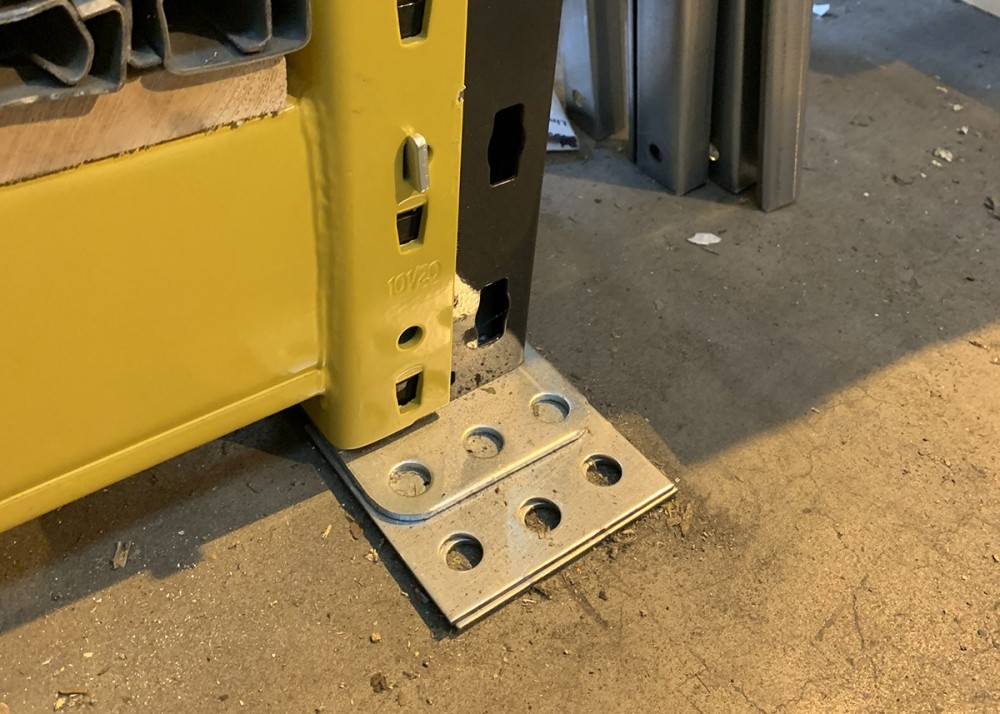

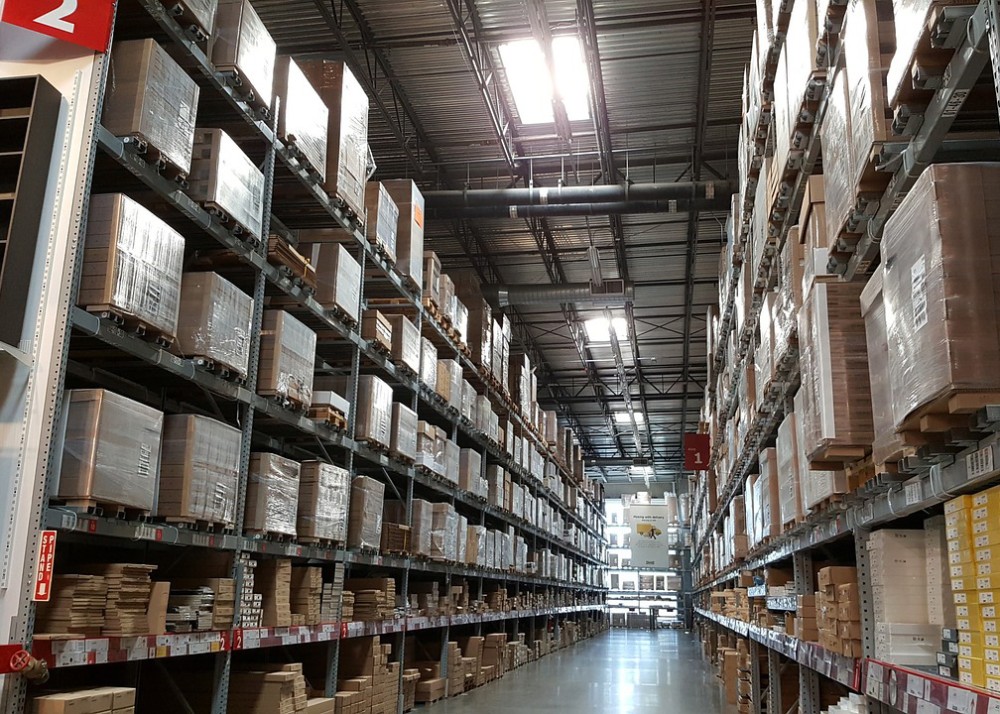
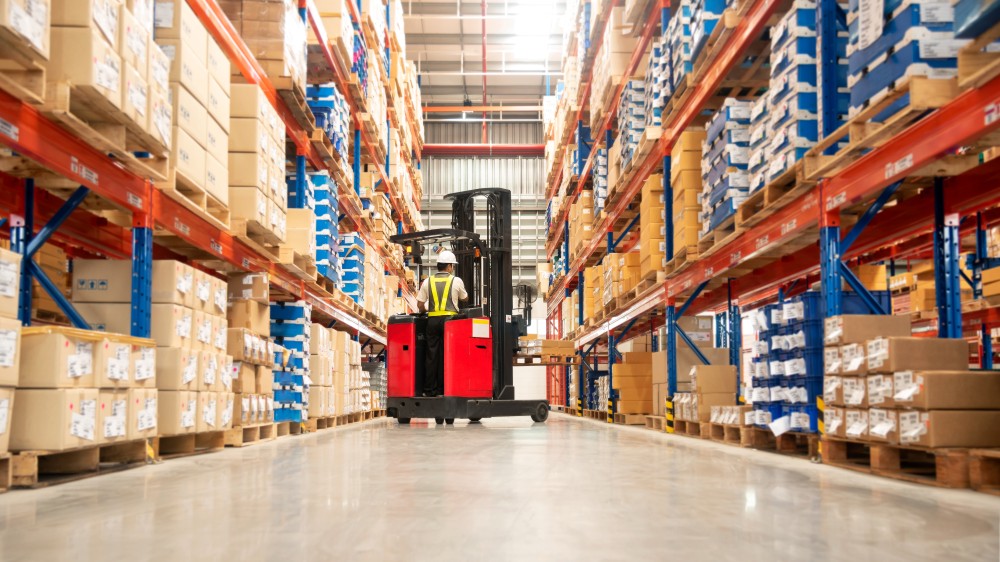
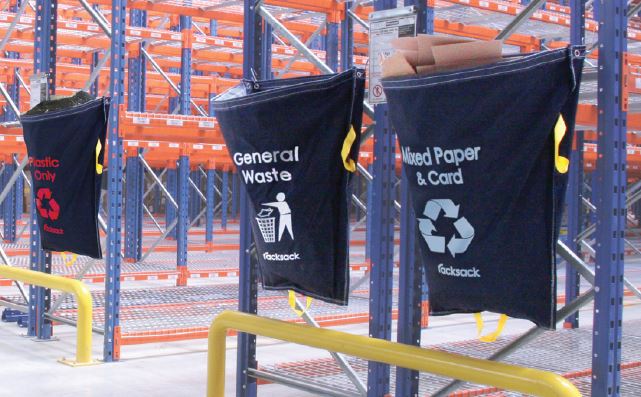


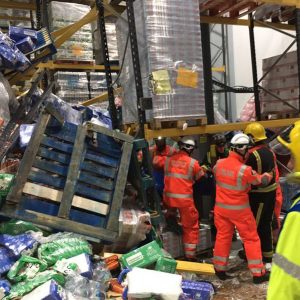
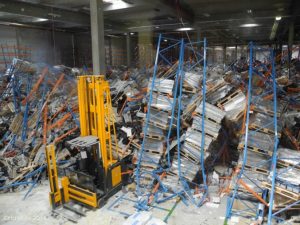

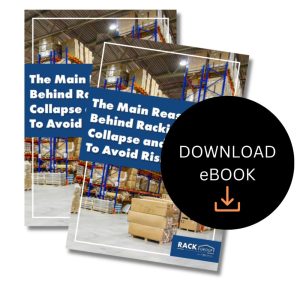 In conclusion, mitigating the risk of racking collapse is a multi-faceted approach that relies on professional installation, regular maintenance, and diligent inspections. Equally important is providing thorough training to warehouse teams to recognise potential hazards and respond swiftly to ensure a safe, secure workplace. By implementing these strategies, warehouse managers can proactively protect their facility, personnel, and valuable inventory from the threat of racking failures.
In conclusion, mitigating the risk of racking collapse is a multi-faceted approach that relies on professional installation, regular maintenance, and diligent inspections. Equally important is providing thorough training to warehouse teams to recognise potential hazards and respond swiftly to ensure a safe, secure workplace. By implementing these strategies, warehouse managers can proactively protect their facility, personnel, and valuable inventory from the threat of racking failures.